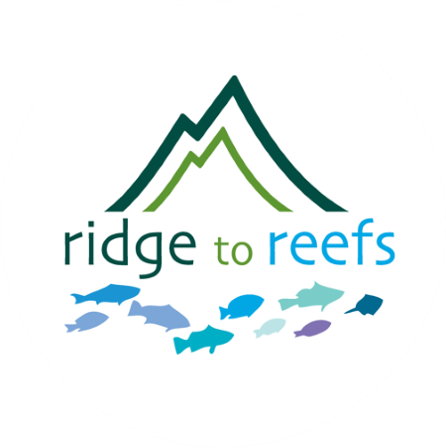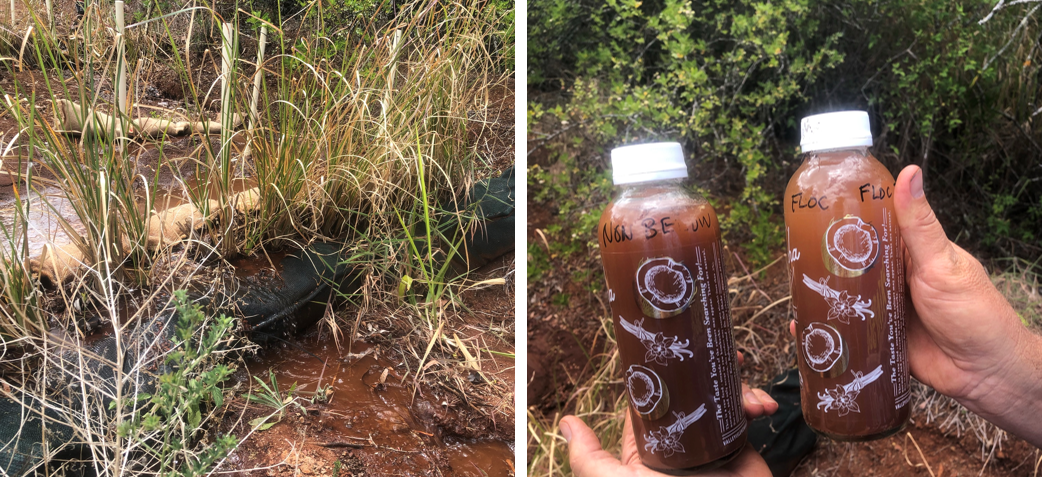Kihei, Hawai’i: Protecting Reefs Through Green Infrastructure Innovations in Wastewater Treatment
Check out the field test and data!
Planting Vetiver
Activity 1 - Planting a half-acre vetiver grass surface application disposal site.
Methods: The project team will create a ½ -acre surface application disposal site utilizing Vetiver grass to facilitate efficient disposal and treatment of recycled wastewater from the Kihei Wastewater Treatment Plant (WWTP). This system will receive ~7,500 to 15,000 gallons of wastewater per day (2.7 to 5.4 million gallons per year).
Outcome 1A: Data quantifying the exact reduction in volume of recycled waste water this system will be able to achieve over half an acre. This will allow direct costs comparison and operational requirements to the existing practice of groundwater injection.
Outcome 1B: Vetiver grass will be planted on topographic contours to facilitate efficient surface disposal of the recycled wastewater. These same rows will provide the ancillary benefit of soil stabilization and erosion control for the pilot site.
Quantifying Evapotranspiration
Activity 2 - Quantifying the evapotranspiration capabilities of vetiver grass in Maui.
Methods: Water will be applied at a fixed volume/rate to several plots of vetiver grass of similar area which are sealed with a liner to ensure negligible water loss through the soil. Effluent volumes from each plot will be measured and evapotranspiration/plant uptake calculated as the difference between in- and out-flow.
Outcomes: Data quantifying the evapotranspiration rates of vetiver grass in a green infrastructure application at the Kihei site. Data on vetiver grass ET rates is limited, and no studies have been done in the Hawaiian islands to measure this metric. Vegetative wastewater treatment systems using this plant constructed by Ridge to Reefs in other tropical islands including Puerto Rico and American Samoa have demonstrated high potentials for evapotranspirative successes. Previous work have resulted in low or zero remaining effluent volume as well as healthy robustly growing vegetation. It is important to monitor the success of these systems on Maui using scientific measurements to conclusively determine the viability this solution for Maui, and to accurately calculate the size of treatment systems needed.
Scalable Solutions Model
Activity 3 - Utilizing evapotranspiration rates to create a scalable model for a County-proposed surface application site.
Methods: Using collected evapotranspiration data the project team will calculate the estimated area of wastewater surface application sites needed to successfully achieve the required volume reduction as determined by Maui County’s needs.
Outcomes: An empirically supported estimate of acreage needed to achieve Maui County’s wastewater volume reduction goals, along with a scaled-up cost:benefit analysis.
Maui County has already set aside 1,000 acres for a potential surface application site, though initial estimates suggest that with the use of vetiver, less than half of this acreage would be necessary. A report will be completed to highlight the findings of this pilot study.




